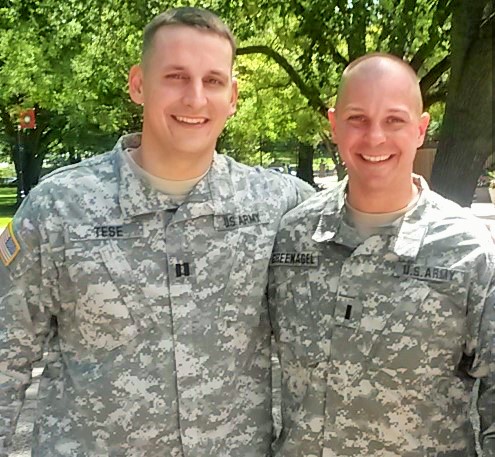S-2367, sponsored by Senator Codey, would update New Jersey’s core curriculum on substance abuse to make sure that our students are receiving effective prevention education.
Fantastic. Students in middle school and high school need to get a comprehensive education on prescription drugs. The marijuana curriculum needs to be overhauled as well in the face of growing social acceptance. These programs should begin at age 10. If the state can’t pass this, then local school boards should address it.
S-2368, sponsored by Senator Rice, would increase state funding for substance abuse prevention efforts by $5 million.
This money is appreciated. That said, $5 million is a pittance in terms of a state budget.
S-1998/A-3129, sponsored by Senators Weinberg and Vitale/ Assemblymen Conaway and Lagana, Assemblywoman Angelini, Assemblyman Benson and Assemblywoman Sumter, would require all physicians to register for the state Prescription Monitoring Program, which helps identify individuals who are doctor shopping for opiates and would help identify rogue prescribers operating “pill mills.”
Exceptional. Like vaccines and the concept of herd immunity, the PMP is only effective if it is mandated. Over a dozen other states have some form of a mandated PMP. Our Task Force, under the guidance of the Attorney General’s office, suggested that masters-level and above mental health and addiction treatment providers have access to the PMP as well. This is one of the most important bills. It also has a low likelihood of being approved by the Governor. (My only concern with this version is that there may be language in it that doesn’t require all prescribers to access the PMP each time they are giving someone a prescription – to work, there has to be a mandate).
S-2029, sponsored by Senators Turner and Vitale, would enhance data collection and resource targeting by government agencies by allowing, with parental permission, for students to participate in voluntary surveys such as anonymous substance abuse surveys.
Fine.
S-2369/A-2859, sponsored by Senators Whelan and Kean/ Assemblymen Eustace and Benson and Assemblywoman Vainieri Huttle, would increase the number of places individuals can drop off unused prescription drugs by expanding “Project Medicine Drop” locations to every State Police barrack, every county sheriff’s office and in county and municipal police departments that chose to participate.
Good. This should be effective when combined with former Attorney General Eric Holder’s recent announcement that hospitals and pharmacies should take back drugs as well.
S-2370/A-709, sponsored by Senators Whelan and Kyrillos/ Assemblywoman Angelini, Assemblyman Benson and Assemblywoman Sumter, would increase public awareness of safe disposal of prescription drugs by requiring pharmacists and prescribers to notify patients of proper and safe disposal options.
Good. Easy to do. Not controversial.
S-2371, sponsored by Senator Barnes, would improve our understanding of overdose trends by requiring the state poison control to establish a clearinghouse of drug overdose information.
Good. Easy to do. Inexpensive. Not controversial.
S-2372/ A-1436, sponsored by Senators Madden and Oroho/ Assemblywomen Caride and Mosquera, would create a Statewide Opioid Law Enforcement Task Force to identify, investigate and prosecute illegal sources and distribution of opiate drugs and to provide training for law enforcement, physicians, pharmacists and other health care professionals to detect and divert drug abuses.
The State Attorney General’s Office and State Office of Criminal Investigations (SCI) have already been doing this. This is a fine idea as long as it isn’t redundant and/or doesn’t lead to fights between different parts of the government.
S-2373, sponsored by Senators Vitale and Addiego, would provide consumers with a better understanding of treatment options by requiring the Department of Mental Health and Addiction Services to annually compare and rank substance abuse providers.
It’s a good concept. I’m not sure how DMHAS would identify what is good or bad or how they would report it. We probably need an independent watchdog to do this.
S-2374, sponsored by Senators Vitale and Singer, would increase the rate that Medicaid providers are reimbursed for evidence-based behavioral health care to the going market-rate, which in turn will increase the number of practitioners willing to take Medicaid patients.
I have no idea where they will get the money for this.
S-2375, sponsored by Senator Vitale, would remove red tape that keeps ambulatory care facilities from providing behavioral health care services without multiple licenses.
I’m wary of this one. Those facilities need to be required to have a LCADC that can provide the necessary treatment; otherwise there will be a degradation of care.
S-324/A-2266, sponsored by Senator Gordon/ Assemblywoman Vainieri Huttle and Assemblyman Lagana, would create a Behavioral Health Insurance Claim Advocacy Program to provide assistance and advocacy in navigating insurance bureaucracy to those with behavioral health care conditions.
When the state government fights with insurance companies, the insurance companies usually win. I’m skeptical that a new bureaucracy could effectively do this.
S-2180/A-3450, sponsored by Senator Gordon/ Assemblywomen Vainieri Huttle and Pinkin, would ensure that those with behavioral health care conditions are eligible through their insurance to receive services prescribed by licensed physicians, physician assistances, psychologists, clinical social workers and certified advance practice nurses by prohibiting insurance companies to deny coverage through their own utilization management review.
This is the Holy Grail. The insurance companies need to be brought to heel. They have continually either provided a lower level of care than is required, shortened the length of suggested treatment or denied coverage all together. When insurance companies have to pay claims, some of them internally call it a medical loss. They are a business, and they make money by paying as little as possible for treatment. The Affordable Care Act and the Parity Laws have attempted to address this, but the insurance companies are still not following through in many cases. This will have to be fought out through litigation, and will probably end up in the Supreme Court.
S-2376, sponsored by Senators Vitale and Gordon, would help doctors coordinate with specialists through telecommunications rather than expensive face-to-face patient visits by creating a grant in the Department of Health to expand remote medical consolations.
I don’t know enough about this to offer up an opinion.
S-2377, sponsored by Senators Barnes and Vitale, would require New Jersey’s colleges and universities to provide substance abuse recovery housing options.
This is a nod to the amazing work that Rutgers has done with its ADAP and Recovery Housing programs. By requiring recovery housing, schools are also required to have at least one full-time licensed clinical alcohol and drug counselor (LCADC). Schools should have at least one for every 5,000 students. Community Colleges should also employ at least one LCADC.
S-2047, sponsored by Senators Kyrillos and Vitale, would ensure that the Department of Human Services have regulatory oversight of substance abuse treatment facilities;
Will they monitor halfway houses for people coming out of the criminal justice system too? Probably not. Governor Christie’s buddies make too much money on that. Recovery Houses are unregulated and need to be overseen by the state as well.
S-2378, sponsored by Senators Vitale and Singer, would extend the
Overdose Prevention Act to provide immunity to law enforcement professionals for delivery of an overdose antidote and would require all syringe access programs to carry and dispense the antidote to needle exchange participants.
Great idea. Easy.
S-2379, sponsored by Senators Vitale and Lesniak, would create a three-year pilot program to enroll pre-trial incarcerated individuals in Medicaid, providing more individuals with coverage and eligibility to enroll in court supervised substance abuse treatment programs.
This only works if they greatly increase the amount of money that Medicaid pays for treatment services.
S-2380, sponsored by Senators Vitale and Lesniak, would ensure that inmates are receiving treatment approved by the agency with the most appropriate expertise and experience by requiring joint regulatory authority over prison-based mental health and substance abuse programs between the Department of Corrections and the Division of Mental Health and Addiction Services.
Great idea. Treatment (and education) will reduce recidivism and save the state a large amount of money. Governor McGreevey has been one of the champions of this idea for several years.
S-2381, sponsored by Senators Vitale and Lesniak, would permit successful completion of certain drug treatment programs operating in state prisons and prohibition drug court programs for those who are using certain medication assisted treatment such as methadone.

